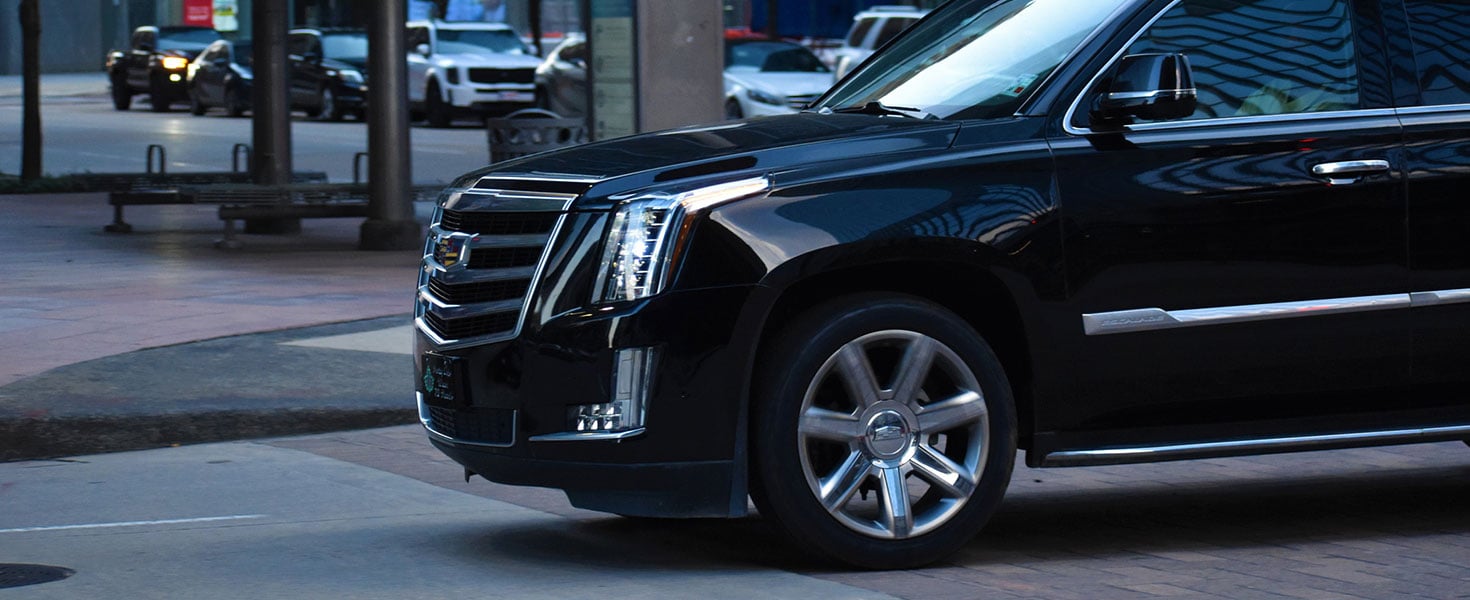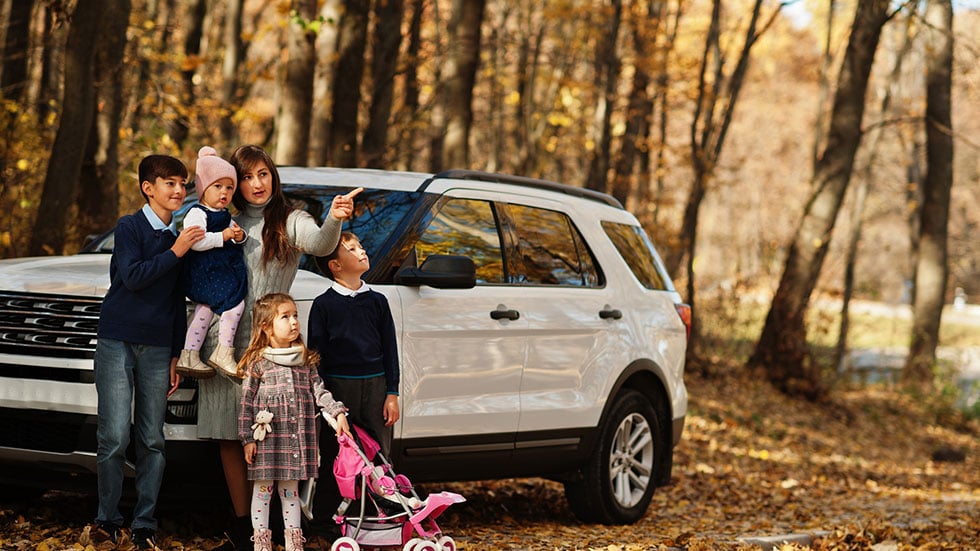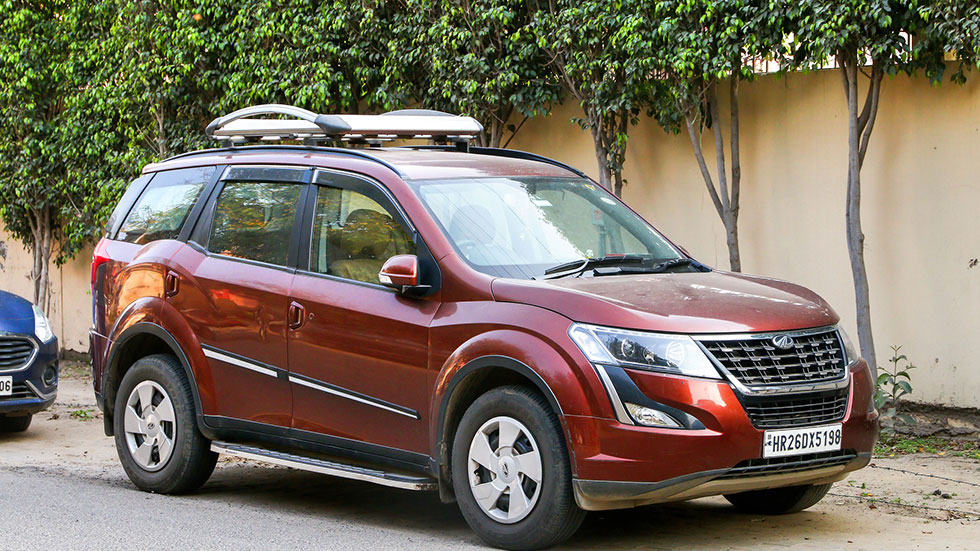Crossover Vs. SUV—Four Key Differences
Factors to consider before you buy

If you have been in the market for a new or used vehicle in the past few years, chances are you've heard the term "crossover." Maybe you're wondering what exactly is a crossover, and how it's different from a sport utility vehicle? There are some important differences between a crossover and an SUV, and it’s helpful to know which is which when it comes time to buy your next vehicle.

WHAT IS A CROSSOVER?
An SUV’s body and frame are two separate pieces that must be joined together during manufacturing. Building the frame separately from the body allows manufacturers to attach the specific body they want, which is why most SUVs have the same frames as pickup trucks. This method of body-on-frame construction is how cars and trucks have been built for more than 100 years.
A crossover’s body and frame are constructed as one single piece, known as a unibody. This type of vehicle construction is a much newer phenomenon, first seen in modern sedans. Building a car with a unibody is more sophisticated, and manufacturers can add elaborate crumple zones to help dissipate energy in the event of a collision.
In the late 1990s, some manufacturers that had already found success with body-on-frame SUVs began imagining alternatives using the unibody architecture of a car. Thus came the earliest crossovers to market, including models still in production today, like the Honda CR-V, Subaru Outback, and Toyota RAV4.
Crossovers and SUVs have distinct benefits and drawbacks that make each a better choice depending on a buyers’ specific needs and circumstances. Here are four key differences to help you compare a crossover vs. an SUV.
- Crossovers can be more practical than SUVs
- SUVs are more capable than crossovers
- SUVs are bigger than crossovers
- Crossovers are less expensive than SUVs
CROSSOVERS CAN BE MORE PRACTICAL THAN SUVS
Crossovers gained traction in the early 2000s, thanks to practical advantages over traditional SUVs. They were smaller, got better fuel economy, and were more comfortable. Their unibody construction gave them a smoother ride and sharper handling than the rough-and-tumble SUVs that had preceded them.
On the styling front, SUVs shared characteristics with pickup trucks, while the inside of a crossover didn’t feel very different from a sedan. The outward visibility of crossovers was excellent and there was more emphasis placed on comfort and technology, plus more safety features for families. These differences aren’t as stark today as they once were, but the key variances have remained.

SUVS ARE MORE CAPABLE THAN CROSSOVERS
With all the ways in which a crossover is more livable day-to-day than an SUV, why would a person still consider buying an SUV? There are a number of reasons to go with an SUV, and capability is perhaps the most important.
Crossovers can’t compete with SUVs when it comes to towing or off-roading. An SUV’s truck-based frame has a ladder structure that gives it extra rigidity and strength for climbing steep, rocky trails or for hauling people and cargo. SUVs also tend to have more ground clearance and four-wheel drive capabilities than a crossover.
SUVS ARE BIGGER THAN CROSSOVERS
If you have a large family or do a lot of towing, the biggest SUVs on the market are still body-on-frame. The full-size SUV class is flush with body-on-frames choices, from the Chevrolet Suburban and Ford Expedition to the Nissan Armada and Toyota Land Cruiser—and more. The two full-size SUVs that are not truck-based are the Land Rover Range Rover and Mercedes-Benz GLS.
At the same time, nearly every subcompact, compact, and midsize SUV on the market is a crossover. Examples include the Honda HR-V, Mazda CX-5, and Kia Telluride. The list goes on. In fact, there are just two “small” body-on-frame SUVs—the Jeep Wrangler and Toyota 4Runner—and both have durability and off-road skills that exceed similar-sized rivals.

CROSSOVERS ARE LESS EXPENSIVE THAN SUVS
As with TVs, houses, and other purchases, the bigger the SUV, the more expensive it tends to be. There’s a clear difference in size between most crossovers and SUVs, which makes price a significant factor. Suppose you don’t need something quite as rugged or powerful as the Toyota Sequoia (MSRP $50,500). In that case, you may want to consider the Toyota Highlander ($36,805). Like the Sequoia, the Highlander carries eight people, but it offers better fuel economy and a more car-like ride.
There are body-on-frame SUVs built for all-out luxury, like the Cadillac Escalade and Lexus LX. These models combine the unsurpassed size and strength of a full-size SUV with car-like refinement and incredible luxury. The Escalade starts at $76,295 and the LX starts at $86,930.
When it comes down to it, crossovers are more affordable, more efficient, and easier to drive, while SUVs are bigger, stronger, and more capable. It’s clear why most shoppers today opt for one over the other. Crossovers are simply more practical for commuting and everyday life. Most people don’t need the extra towing or ground clearance available with SUVs. But, if you do need something more rugged or are willing to pay a bit more for the best of both worlds, then an SUV may be the best choice for you.
This content was created in partnership with TrueCar.
